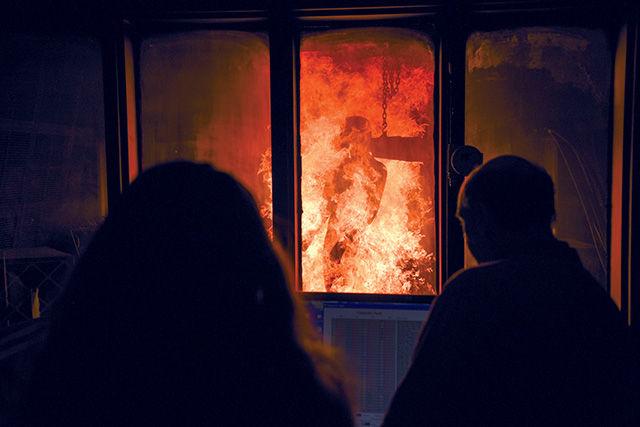The College of Textiles’ Textile Protection and Comfort Center (T-PACC) is in the process of developing new firefighter gear prototypes to improve previous ones, which will reduce firefighter’s heat loss.
The current firefighter suit prototypes provide excellent thermal protection, but the extra material, bulk and insulation leads to heat stress, exhaustion and strain. T-PACC wants to create a prototype that is lighter and less bulky than the current prototypes on the market to reduce thermal strain, according to Roger Barker, director of T-PACC.
“There are more incidents not from burns, but from injuries like fatigue, heat stress, exhaustion,” said Meredith McQuerry, first year graduate student studying textile technologies and a research assistant at T-PACC. “That has become a big concern for firefighters.”
T-PACC is working on a structural firefighter suit which firefighters will wear when dealing with fires that occur in structures like apartment buildings, businesses and schools.
Researchers at T-PACC are working on improving things like ventilation strategies and layer arrangement in creating their new prototypes, according to McQuerry.
“If we can make a structural suit that can engineer advance materials and garment designs and put it all together using our unique research abilities, it will really make an advance,” Barker said.
What makes T-PACC so cutting-edge is that it is the only academic center in the country that can research, test and evaluate the comfort and protective performance of textile materials all in one location.
Researchers at T-PACC test their new advances using mannequin technologies which replicate human shape and behavior.
“When you put a material into a garment, you’ve created a 3-D structure. How you sweat and how you lose heat differs when you have on a garment in this 3-D structure,” McQuerry said.
In T-PACC, there are sweating mannequins that simulate how a human would sweat and PyroMen that simulate and evaluate the thermal protective clothing under conditions where heat and flames hit the firefighter at once.
“The closer we get to simulating a human, the closer we are to predicting how these garments perform on a human,” McQuerry said. “This is where the mannequin is beneficial.”
The technologies at T-PACC are key to developing new structural gear prototypes, according to Barker.
T-PACC tests human wear on firefighters from the Raleigh Fire Department, according to McQuerry.
“We test these new developments and prototypes for their ability to make improvements on not only the mannequin level, but the full systems level and what would happen if a human wore this for an extended period of time,” McQuerry said.
While T-PACC is looking to improve heat loss, they do not want to sacrifice their first priority, which is the level of protection, according to Carl Escriva, first year graduate student studying textile Engineering and a research assistant at T-PACC.
“We want to maintain thermal protection, but at the same time improve heat loss and comfort and heat strain and heat stress,” Escriva said.
T-PACC is working with one particular firefighter industry with their developing structural firefighter suit prototype, according to McQuerry.
“Our goal is not to sell anything though,” McQuerry said. “It’s more of a proof of concept that these design concepts can be implemented for improvement.”
Barker said T-PACC hopes their new prototypes will be accepted by the fire industry.
“I’m excited that I can use my textile engineering degree and what I’ve learned here at NC State to benefit firefighters,” Escriva said.
McQuerry said the structural firefighter suits are expected to be fully developed by June 2016.








